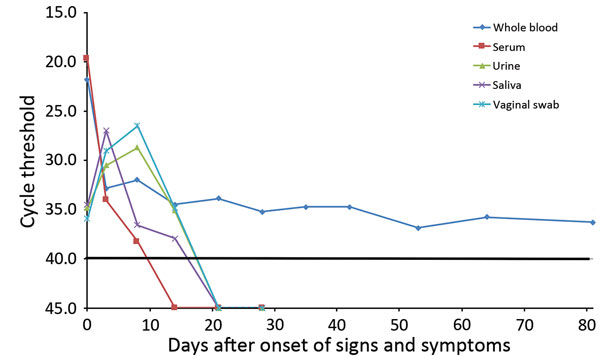Volume 23, Number 1—January 2017
Dispatch
Prolonged Detection of Zika Virus in Vaginal Secretions and Whole Blood
Figure

Figure. Quantitative reverse transcription PCR cycle threshold values over time (days after onset of illness) for whole blood, serum, urine, saliva, and vaginal mucosal swab specimens obtained from a 26-year-old woman infected with Zika virus who returned from Honduras to the United States. A cutoff value for a negative result was established at a cycle threshold of 40 (black horizontal line).
Page created: December 14, 2016
Page updated: December 14, 2016
Page reviewed: December 14, 2016
The conclusions, findings, and opinions expressed by authors contributing to this journal do not necessarily reflect the official position of the U.S. Department of Health and Human Services, the Public Health Service, the Centers for Disease Control and Prevention, or the authors' affiliated institutions. Use of trade names is for identification only and does not imply endorsement by any of the groups named above.